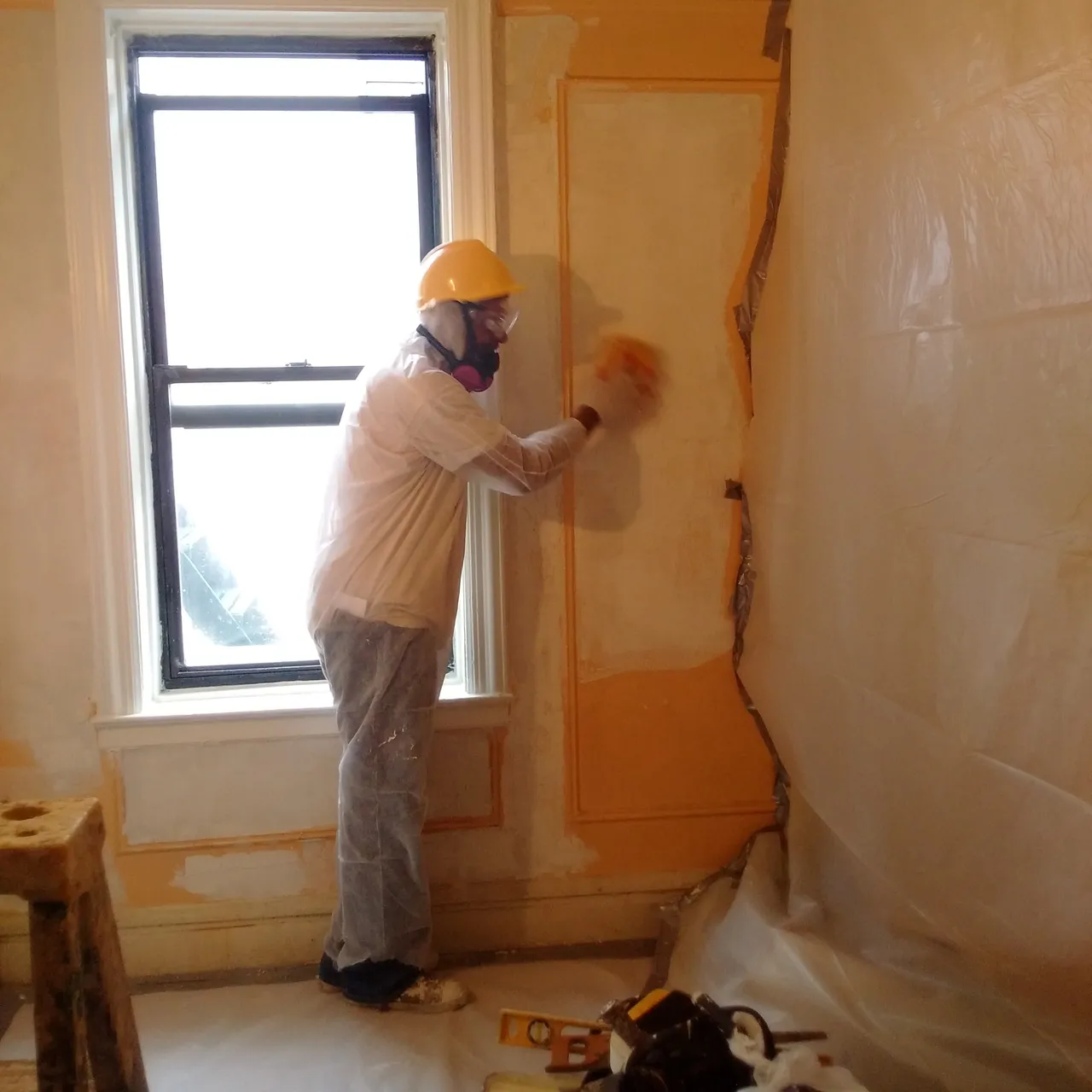Relied On Lead Paint Removal Company-- NYC's Premier Lead Reduction Service
Comprehensive Overview on Effective Lead Violation Removal Methods
In the world of ecological safety, dealing with lead infractions requires a thorough and organized approach. This extensive guide begins by highlighting the important first actions of recognizing lead hazards through advanced assessment and testing methods. Methods such as XRF analysis and dust wipe sampling are essential in identifying contamination sources. Additionally, the guide clarifies on the significance of adhering to strict safety protocols during the elimination procedure, consisting of making use of appropriate PPE and isolating impacted areas (Lead Paint Removal Company). The subsequent areas guarantee to talk about post-removal verification and preventive approaches, making certain long-lasting safety and compliance. Discover the detailed details that make these techniques not simply efficient but essential.
Identifying Lead Threats
Identifying lead threats is a vital very first step in minimizing the risks related to lead exposure. Lead, a hazardous steel, can be present in different ecological mediums, including paint, soil, water, and dirt. It presents serious wellness threats, especially to youngsters and pregnant ladies, leading to neurological damage and developing delays. Precise identification of prospective lead resources is crucial for effective remediation.
The preliminary stage in determining lead dangers entails recognizing usual lead resources within the constructed setting. Frameworks constructed prior to 1978 are specifically at risk as a result of the widespread use lead-based paint throughout that duration. Furthermore, soil contamination can happen from weakening exterior paint, industrial emissions, or historic usage of leaded fuel.
One more considerable source is lead piping and plumbing components, which can seep lead right into alcohol consumption water. Durable goods such as toys, porcelains, and imported items may also contain harmful lead degrees. Especially, work-related atmospheres and pastimes involving lead can track impurities right into homes.
Evaluation and Testing
When resolving lead threats, efficient assessment and screening are vital. This important step makes certain the recognition and quantification of lead visibility, consequently directing subsequent removal efforts. First evaluation generally entails a visual inspection to recognize potential lead resources, such as degrading paint or contaminated dirt. This is complemented by even more rigorous screening methodologies to identify the degree of contamination.

Dust clean sampling is one more critical technique, especially in household settings. By collecting samples from floorings, windowsills, and various other surface areas, this method offers understandings right into possible direct exposure risks. Additionally, dirt screening around structure borders is necessary to discover lead contamination that might posture threats, especially to children.
Safe Removal Treatments
Upon finishing thorough assessment and screening, applying secure elimination treatments is the following important phase in dealing with lead risks. This process ensures that lead-contaminated materials are properly and securely removed, lessening danger to both workers and residents. The initial action includes isolating the affected location utilizing plastic sheet and proper securing methods to avoid the spread of lead dust.
Employees need recommended you read to put on suitable individual safety equipment (PPE), consisting of respirators, handwear covers, and disposable coveralls, to mitigate direct exposure. Utilizing specialized tools and damp techniques, such as damp sanding or using HEPA-filtered vacuum cleaners, decreases the dispersion of lead fragments. It is important to avoid completely dry sanding or unpleasant blasting, as these methods can produce hazardous lead dirt.
Waste disposal is an additional crucial component; all infected materials have to be securely landed and identified according to EPA and neighborhood policies. Additionally, complete cleaning of the workplace with HEPA vacuums and damp wiping makes sure the removal of residual lead fragments.
Post-Removal Verification

Confirmation of successful lead removal, known over at this website as post-removal verification, is crucial to make sure the safety and security and habitability of the remediated location. This examination makes certain that all known resources of lead have actually been addressed and that no noticeable indicators of contamination continue to be.
Adhering to the aesthetic examination, ecological tasting is carried out. This includes gathering dust, soil, and sometimes check this site out water samples from the remediated location. Approved research laboratories examine these examples to determine lead levels, guaranteeing they drop listed below the security thresholds developed by governing bodies such as the Environmental Defense Company (EPA)
Additionally, air quality screening might be done to discover air-borne lead bits, particularly in cases where extensive lead-based paint elimination or restoration has occurred. The outcomes of these tests provide measurable data confirming that the lead degrees are within allowable limits.
Inevitably, post-removal confirmation acts as a crucial checkpoint, confirming the efficiency of the lead abatement initiatives and protecting the health of passengers and visitors.
Preventative Procedures and Maintenance

An essential safety net consists of making use of lead-safe accredited contractors for any kind of renovation, repair service, or painting activities. These specialists are learnt techniques that minimize lead dust and particles. Additionally, preserving coloured surfaces to prevent chipping or peeling is crucial, as weakening paint can launch lead fragments into the atmosphere.
Educational efforts targeting homeowner and renters pertaining to the dangers of lead and the value of reporting any kind of potential hazards can even more improve preventative initiatives. Routine cleaning utilizing HEPA vacuum cleaners and damp wiping techniques can considerably minimize lead dirt buildup.
Conclusion
In summary, efficient lead violation elimination requires a meticulous strategy including comprehensive analysis, exact testing, and rigid removal treatments. Continuous inspections and upkeep are important to minimize future lead risks, thereby securing public health and making sure sustained conformity with regulatory demands.